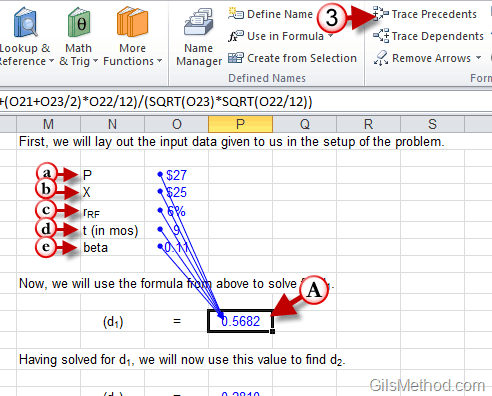

SPONSORED REPORT
Work in accounting, auditing, finance or other fields, with anyone, anywhere, with confidence. With Excel, your Office moves with you and can implement the most complex formulas, with amazing features. Highlights: Unmistakably Office, designed for Mac - MacBook Pro Touch Bar is fully supported by Microsoft Excel. In the Formula Auditing group, click the Remove Arrows icon to make the auditing arrow go away. Finding which Excel formula(s) a cell can change. Sometimes you may be curious about how a particular cell may affect a formula stored in your worksheet.
Supercharge your audit process with AI
Loosest slots in vegas 2018. Auditors today can employ AI to automate tedious tasks and gain far greater insights from their clients' information. This free report lays out a five-step process for implementing AI and shows ways AI can add value to the auditing process.
Where does chrome install. RESOURCES
Keeping you informed and prepared amid the coronavirus crisis
We're gathering the latest news stories along with relevant columns, tips, podcasts, and videos on this page, along with curated items from our archives to help with uncertainty and disruption.
Excel 2007 offers some effective formula-auditing tools for tracking down the cell that's causing your error woes by tracing the relationships between the formulas in the cells of your worksheet. https://bestticarmi1985.mystrikingly.com/blog/activision-call-of-duty-support. By tracing the relationships, you can test formulas to see which cells, called direct precedents in spreadsheet jargon, directly feed the formulas and which cells, called dependents, depend on the results of the formulas. Excel even offers a way to visually backtrack the potential sources of an error value in the formula of a particular cell.
The formula-auditing tools are found in the command buttons located in the Formula Auditing group on the Formulas tab of the Ribbon. These command buttons include the following:
Microsoft Excel Commands And Formulas
Trace Precedents: When you click this button, Excel draws arrows to the cells (the so-called direct precedents) that are referred to in the formula inside the selected cell. When you click this button again, Excel adds 'tracer' arrows that show the cells (the so-called indirect precedents) that are referred to in the formulas in the direct precedents.
Trace Dependents: When you click this button, Excel draws arrows from the selected cell to the cells (the so-called direct dependents) that use, or depend on, the results of the formula in the selected cell. When you click this button again, Excel adds tracer arrows identifying the cells (the so-called indirect dependents) that refer to formulas found in the direct dependents.
Remove Arrows: Clicking this button (or the Remove Arrows option on its drop-down menu) removes all the arrows drawn, no matter what button or command you used to put them there. Click the Remove Precedent Arrows option on the drop-down menu to get rid of the arrows that were drawn when you clicked the Trace Precedents button; and Remove Dependent Arrows to get rid of the arrows that were drawn when you clicked Trace Dependents.
Show Formulas: To display all formulas in their cells in the worksheet instead of their calculated values (just like pressing Ctrl+`).
Error Checking: https://bxijxx.over-blog.com/2021/01/free-partition-manager-windows-10.html. When you click this button or the Error Checking option on its drop-down menu, Excel displays the Error Checking dialog box, which describes the nature of the error in the current cell, gives you help on it, and enables you to trace its precedents. Click the Trace Error option on this button's drop-down menu to attempt to locate the cell that contains the original formula that has an error. Click the Circular References option on this button's drop-down menu to display a menu with a list of all the cell addresses that contain circular references in the active worksheet.
Evaluate Formula: Clicking this button opens the Evaluate Formula dialog box, where you can have Excel evaluate each part of the formula in the current cell. The Evaluate Formula feature can be quite useful in formulas that nest many functions within them.
Watch Window: Clicking this button opens the Watch Window pane, which displays the workbook, sheet, cell location, range name, current value, and formula in any cells that you add to the watch list. To add a cell to the watch list, click the cell in the worksheet, click the Add Watch button in the Watch Window pane, and then click Add in the Add Watch dialog box that appears.
